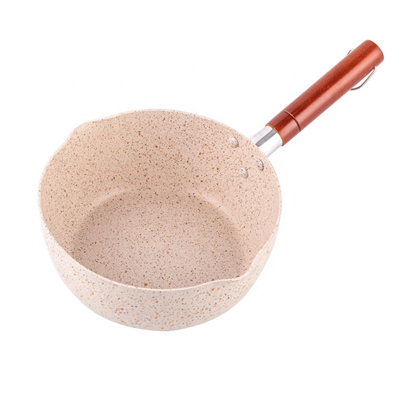Sauces are the crowning glory of many culinary creations, elevating dishes from ordinary to extraordinary. The sauce pan, a seemingly humble kitchen tool, is the secret weapon behind the art of sauce-making. In this article, we’ll unveil the potential of the sauce pan and delve into the techniques that lead to mastering the delicate art of sauces.
Roux: The Foundation of Creaminess: A roux, consisting of equal parts fat and flour, is the foundation of many creamy sauces. In a sauce pan, gently melt butter and whisk in flour to create a paste. Cooking the roux over low heat removes the raw taste of flour and gives it a nutty aroma. Gradually adding milk or broth transforms the roux into a velvety base that thickens sauces to perfection.
Deglazing and Fond Redemption: After searing meats, the sauce pan becomes a canvas for deglazing and redeeming flavorful fond. Adding liquid—wine, broth, or stock—to the pan releases the browned bits from the bottom. As the liquid reduces and incorporates the fond, it becomes a luscious sauce that embodies the essence of the dish.
Emulsification: The Marriage of Ingredients: Emulsified sauces like hollandaise and mayonnaise are achieved through the magical process of emulsification. The sauce pan provides the ideal environment for slowly whisking together oil and an acidic liquid, like vinegar or lemon juice. As the mixture comes together, the sauce pan ensures a gradual fusion that results in a smooth and harmonious union.
Reduction: Concentrating Flavors: The sauce pan’s broad surface area facilitates reduction, a technique that concentrates flavors by evaporating excess moisture. As liquids simmer and reduce, the sauce becomes more robust and intense in taste. Reduction is a key step in creating sauces that pack a punch without overwhelming the palate.
Timing and Patience: The Perfect Simmer: Timing and patience are essential when working with a sauce pan. Achieving the perfect simmer—just below boiling—is crucial for sauces. A rolling boil can lead to overcooking and curdling, whereas a gentle simmer allows flavors to meld without risk. The sauce pan’s even heat distribution helps maintain this ideal temperature.
Precision in Temperatures: Certain sauces, like custards and temperamental emulsions, require precision in temperature control. The sauce pan’s ability to evenly distribute heat allows you to achieve the delicate balance necessary for creating smooth, silky textures and avoiding curdling.
Balancing Flavors: The Art of Adjustment: The sauce pan isn’t just a tool for cooking; it’s a canvas for balancing flavors. Whether it’s adjusting the seasoning, adding a touch of acidity, or incorporating fresh herbs, the sauce pan allows you to finesse and perfect your sauce until it’s a symphony of taste.
In conclusion, the sauce pan is a vessel of culinary finesse, a realm where basic ingredients transform into exquisite sauces that grace our plates with flavor and elegance. By mastering the techniques that the sauce pan facilitates, you can unleash your creativity and create sauces that elevate your culinary endeavors to new heights.






